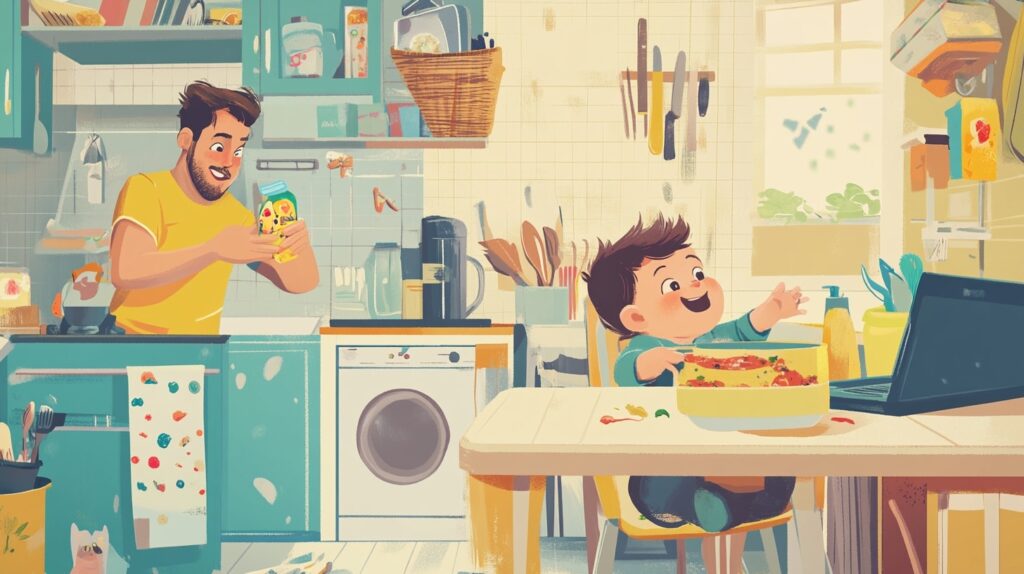Table of Contents
ToggleThe Great Baby Food Showdown: Pouches vs. Homemade – Which Will Reign Supreme?
Alright, my fellow sleep-deprived parents, gather ’round for the ultimate smackdown in the world of baby nutrition. In one corner, we’ve got the convenience champion – the mighty pouch! And in the other, the DIY darling – homemade baby food! Who will emerge victorious in this epic battle for your little one’s taste buds and your sanity? Buckle up, because we’re about to dive deep into the messy, mushy world of baby food.
Now, I don’t know about you, but when I first became a parent, I had visions of lovingly preparing gourmet baby meals while my angelic child cooed contentedly in the background. Fast forward a few sleep-deprived months, and I found myself frantically squeezing a pouch into my baby’s mouth while trying to answer work emails and fold laundry simultaneously. Oh, how the mighty have fallen!
But fear not, my friends. Whether you’re Team Pouch or Team Homemade (or straddling the fence like a sleep-deprived acrobat), we’re going to break down the pros and cons of each option. By the end of this article, you’ll be armed with the knowledge to make the best decision for your family – or at least have a good laugh about the absurdity of it all.
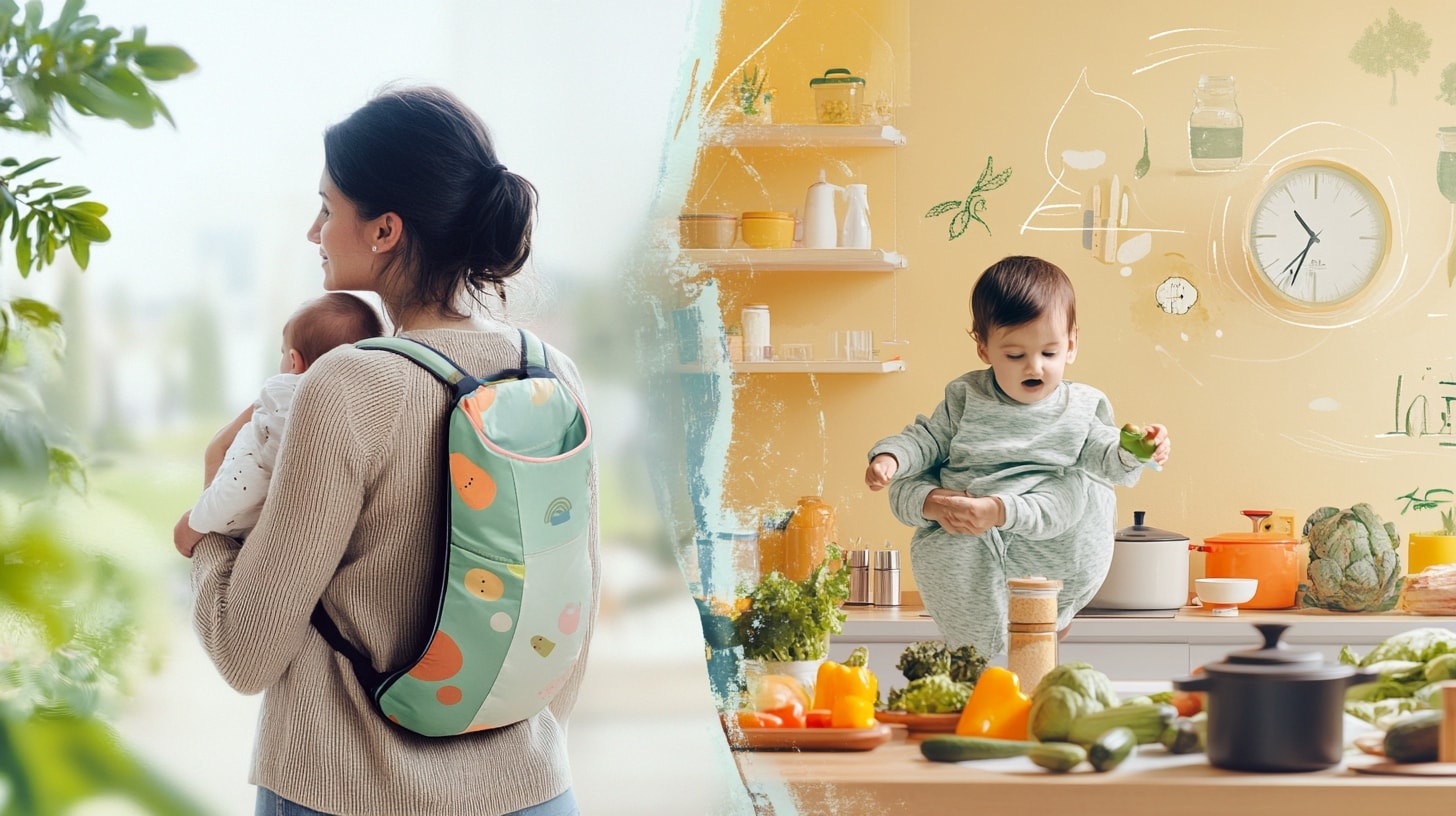
The Convenience Conundrum: Pouches vs. Your Precious Time
Let’s start with the elephant in the room – convenience. Because let’s face it, when you’re running on two hours of sleep and haven’t showered in days, convenience is king.
Pouches are the undisputed champions of convenience. They’re like the fast food of the baby world – quick, easy, and always there when you need them. You can toss them in your diaper bag, whip them out at a moment’s notice, and even hand them off to your little one for self-feeding (just be prepared for some impressive artwork on your walls).
On the flip side, homemade baby food requires a bit more effort. You’ve got to shop for ingredients, prep them, cook them, blend them, and then store them. It’s like being a tiny human’s personal chef, minus the fancy hat and the ability to drink wine on the job.
I remember one particularly frazzled day when I attempted to make a batch of homemade sweet potato puree. There I was, covered in orange goop, with a screaming baby on my hip and a dog trying to lick the floor clean. Meanwhile, my neighbor casually strolled by with her baby happily sucking on a pouch. The envy was real, folks.
But here’s the thing – while pouches might save you time in the moment, making your own baby food can actually be more efficient in the long run. You can make big batches and freeze them in portions, ready to grab and go. Plus, you get to feel like a domestic goddess (or god) for approximately 2.5 seconds before your baby spits it all over your last clean shirt.
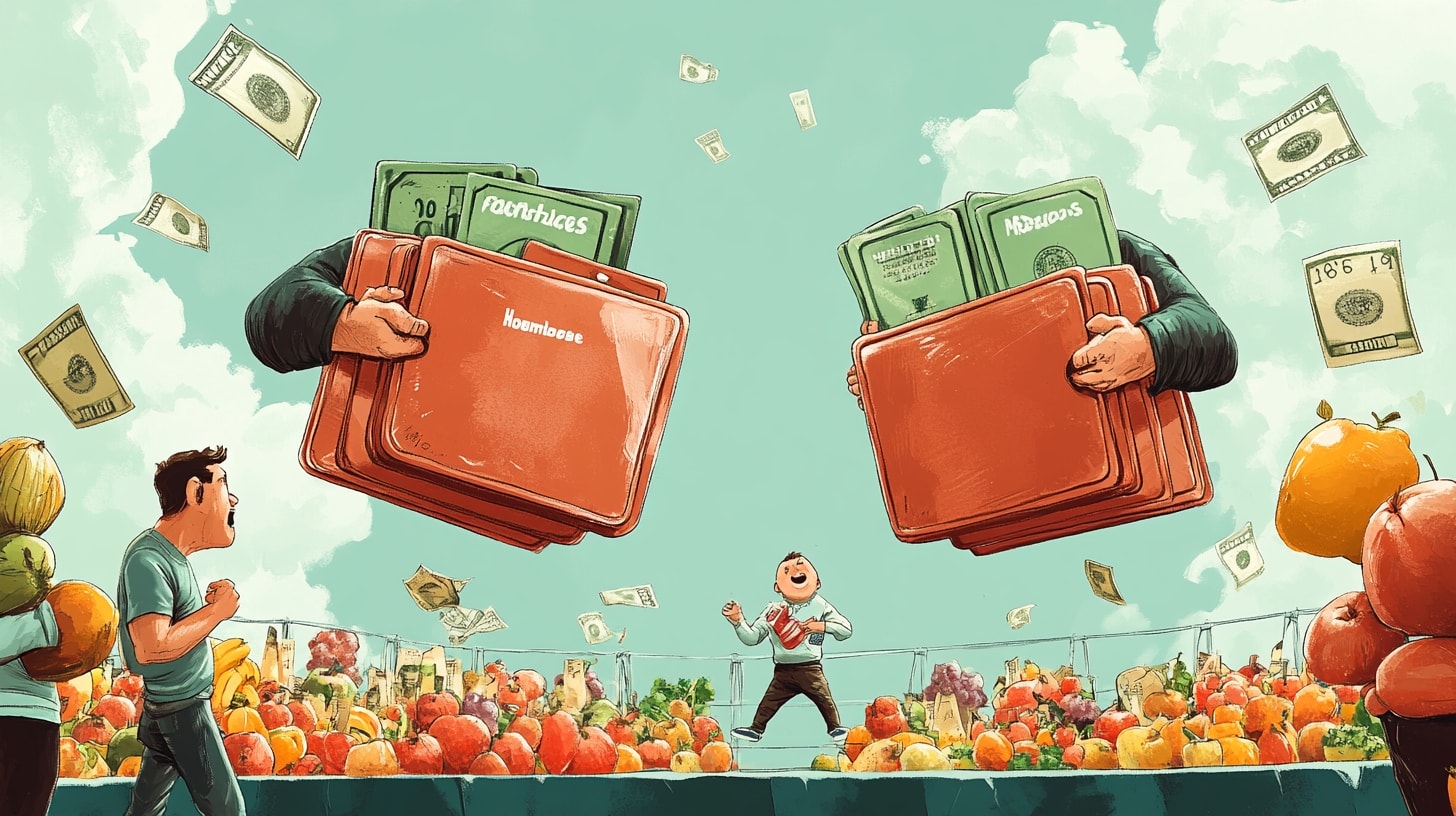
The Money Talks: Pouches vs. Your Wallet
Now, let’s talk about something that’s close to all our hearts – money. Because raising a tiny human is expensive enough without breaking the bank on purees.
At first glance, pouches might seem like the more budget-friendly option. They’re readily available, often on sale, and you don’t need any special equipment to use them. But those costs can add up faster than your baby outgrows their clothes.
On the other hand, making your own baby food can be surprisingly economical. You can buy fruits and veggies in bulk when they’re in season and on sale, and a little goes a long way when you’re dealing with baby portions. Plus, you can use the same ingredients you’re already buying for your own meals.
I’ll never forget the day I realized I’d spent more on pouches in a month than I had on my own groceries. It was like a lightbulb moment, except instead of a lightbulb, it was my wallet screaming in agony.
But here’s a little Caribbean-inspired tip for you: Try incorporating some of our local fruits and veggies into your homemade baby food. Mangoes, papayas, and sweet potatoes are not only delicious and nutritious, but they’re also often cheaper than imported produce. Your baby’s taste buds (and your bank account) will thank you!

The Ingredient Investigation: What’s Really in That Pouch?
Alright, it’s time to put on our detective hats and dive into the mysterious world of ingredients. Because when it comes to what we’re putting in our babies’ bodies, we suddenly turn into CSI: Kitchen Edition.
Pouches have come a long way in recent years. Many brands now offer organic options with simple, recognizable ingredients. But let’s be real – some of them still have ingredient lists longer than a CVS receipt. And don’t even get me started on the added sugars and preservatives lurking in some varieties.
With homemade baby food, you’re in complete control. You know exactly what’s going into that puree, down to the last pea. There’s no mystery, no sneaky additives, just pure, unadulterated baby fuel.
I remember scrutinizing pouch labels in the grocery store like I was decoding ancient hieroglyphics. What in the world is ascorbic acid? I’d mutter to myself, while my baby tried to eat my shopping list. Meanwhile, the ingredients in my homemade purees were so simple, I could count them on one hand – even with a baby hanging off my arm.
But here’s the catch – not all homemade baby food is created equal. If you’re not careful about food safety and storage, you could end up with a science experiment in your fridge that would make even the most adventurous foodie cringe. And let’s not forget about the potential choking hazards if you don’t get the texture just right.
So whether you choose pouches or homemade, always read labels, follow safety guidelines, and trust your parental instincts. And maybe invest in a hazmat suit for those particularly explosive diaper changes.
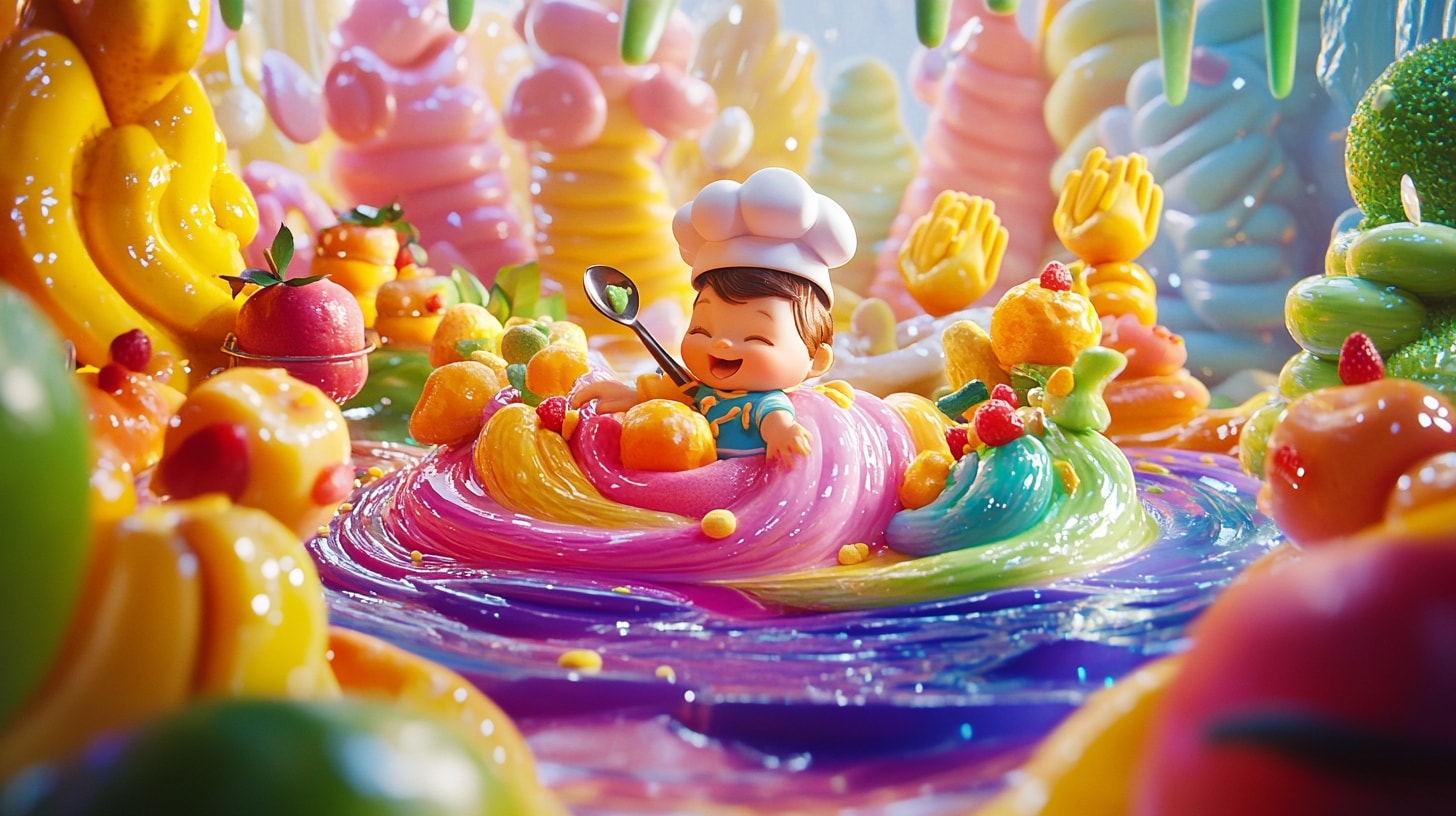
The Texture Tango: Smooth Moves vs. Lumpy Lessons
Now, let’s shimmy on over to the dance floor and talk about texture. Because when it comes to baby food, texture isn’t just about mouthfeel – it’s about developmental milestones and avoiding mealtime meltdowns.
Pouches are the smooth operators of the baby food world. They offer a consistent, silky texture that’s easy for babies to swallow and less likely to trigger their gag reflex. It’s like a slip ‘n slide for their taste buds. But here’s the rub – some experts worry that babies who rely too heavily on pouches might struggle to transition to more textured foods later on.
Homemade baby food, on the other hand, gives you the flexibility to gradually introduce different textures as your baby grows. You can start with smooth purees and slowly work your way up to more chunky, lumpy concoctions. It’s like a culinary choose-your-own-adventure for tiny humans.
I’ll never forget the first time I tried to introduce a chunkier homemade puree to my little one. I thought I was being so clever, slowly increasing the texture over time. But apparently, my baby didn’t get the memo. One spoonful of slightly lumpy sweet potato, and suddenly my kitchen looked like a scene from a food fight movie. Orange puree everywhere – in my hair, on the ceiling, even in the dog’s fur. It was like a sweet potato bomb had exploded.
But you know what? That messy experience was actually a valuable lesson for both of us. My baby learned to handle different textures (eventually), and I learned the importance of having a good sense of humor (and a mop) when it comes to feeding time.
Here’s a little Caribbean-inspired tip for you: Try introducing some of our traditional textures to your baby’s diet. A smooth callaloo puree can be a great way to start, and as your little one gets more adventurous, you can work your way up to mashed plantains or finely ground rice and peas. Just be prepared for some colorful diapers!
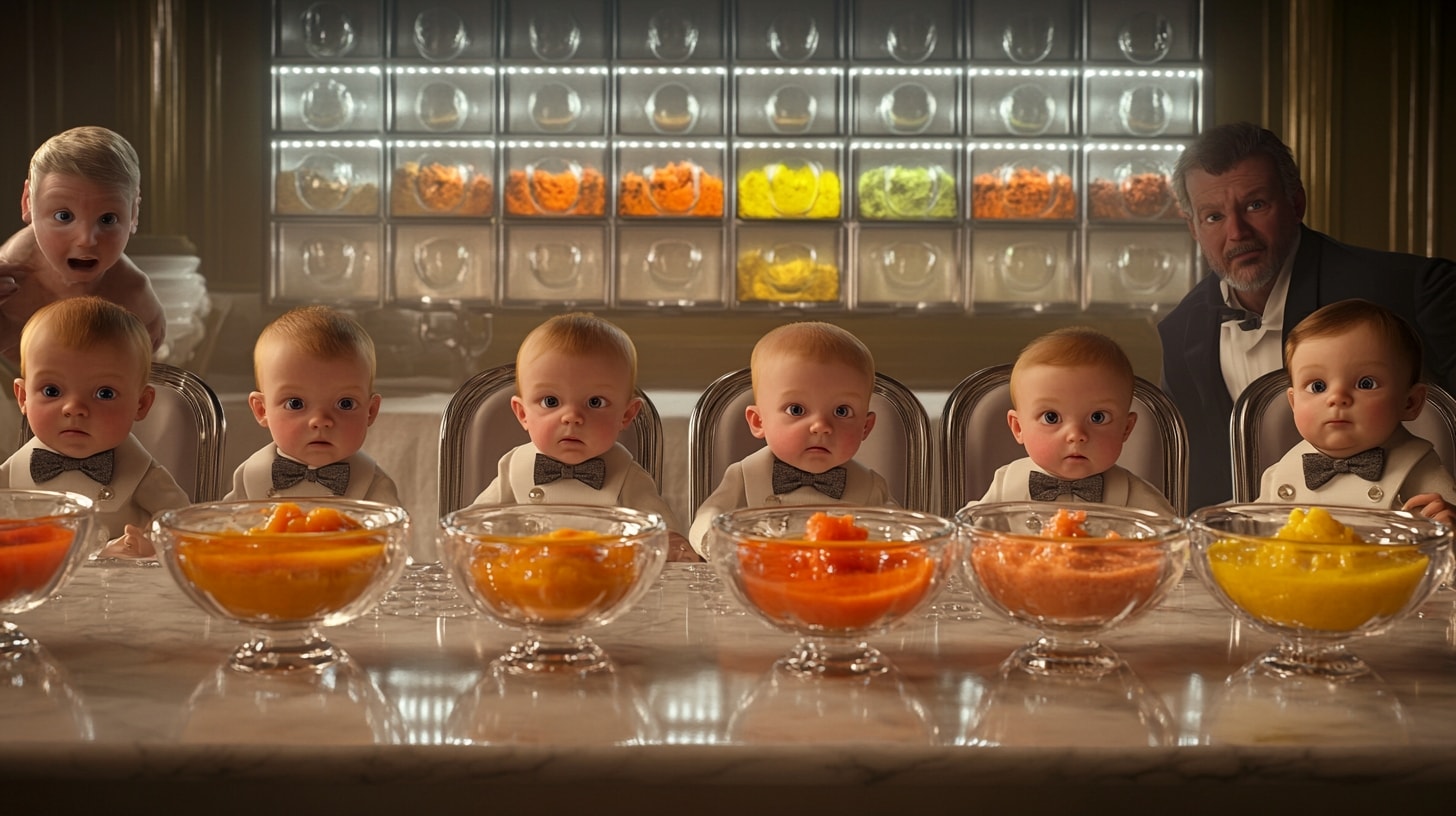
The Taste Test: Bland Basics vs. Flavor Fiesta
Alright, my fellow food critics, it’s time to put our taste buds to the test. Because let’s face it, if we’re going to spend half our lives covered in baby food, it might as well taste good, right?
Pouches come in a wide variety of flavors, from simple single-ingredient purees to exotic fruit and veggie combos that sound more like a fancy smoothie than baby food. And let’s be honest, some of them are pretty tasty (not that I’ve ever snuck a taste when my baby wasn’t looking… ahem). But here’s the thing – many pouches rely on naturally sweet ingredients like apple or pear puree as a base, which might make them more palatable but doesn’t necessarily encourage babies to develop a taste for a wide range of flavors.
Homemade baby food, on the other hand, is your chance to unleash your inner Gordon Ramsay (minus the colorful language, of course). You have complete control over the flavors, which means you can introduce your baby to a world of tastes beyond the basics. Want to add a pinch of cinnamon to that apple puree? Go for it! Feeling adventurous with some mild curry powder in the sweet potato mash? Why not!
I’ll never forget the day I decided to get creative with my homemade baby food. Inspired by my Caribbean roots, I whipped up a batch of mango and coconut puree. The smell was heavenly, and I couldn’t wait to introduce my little one to the flavors of my childhood. I dramatically presented the spoon, camera at the ready to capture this momentous occasion… only to have my baby take one taste and pull a face that can only be described as betrayed disgust. Back to the drawing board!
But you know what? That’s the beauty of making your own baby food. You can experiment, adjust, and find what works for your little one. And who knows? You might even discover some new flavor combinations that the whole family enjoys. (Mango and coconut smoothies, anyone?)
Here’s a little tip from my Caribbean kitchen: Don’t be afraid to introduce mild spices and herbs to your baby’s diet. A little bit of nutmeg in a sweet potato puree or some fresh thyme in a vegetable mash can help develop your baby’s palate and make mealtimes more interesting for everyone involved. Just remember to start small and always check with your pediatrician first.
The Final Verdict: A Delicious Compromise
So, after all this debate, who comes out on top in the great baby food battle? Drumroll, please…
The winner is… both! Or neither. Or somewhere in between. Because like most things in parenting, there’s no one-size-fits-all solution.
The truth is, most parents end up using a combination of pouches and homemade food. Pouches are great for on-the-go situations, travel, or those days when you just can’t muster the energy to puree another sweet potato. Homemade food is perfect for introducing new flavors and textures, controlling ingredients, and saving money in the long run.
My personal strategy? I like to think of it as a baby food buffet. I keep a stash of pouches for emergencies and outings, but I also set aside some time each week to make a batch of homemade purees. This way, I get the best of both worlds – convenience when I need it, and the satisfaction of knowing exactly what’s going into my baby’s tummy most of the time.
Remember, fed is best. Whether you’re Team Pouch, Team Homemade, or Team Whatever-Gets-Food-Into-The-Baby’s-Mouth, you’re doing a great job. Parenting is hard enough without beating yourself up over purees.
So the next time you find yourself in the baby food aisle, staring at the pouches like they hold the secrets of the universe, or elbow-deep in pureed carrots wondering where it all went wrong, take a deep breath. You’ve got this. And if all else fails, just remember – in a few short years, you’ll be arguing with a toddler about why they can’t have ice cream for breakfast. Suddenly, purees don’t seem so bad, do they?
Now, if you’ll excuse me, I have a date with a blender and a suspicious-looking banana. Wish me luck!
Expertise: Sarah is an expert in all aspects of baby health and care. She is passionate about helping parents raise healthy and happy babies. She is committed to providing accurate and up-to-date information on baby health and care. She is a frequent speaker at parenting conferences and workshops.
Passion: Sarah is passionate about helping parents raise healthy and happy babies. She believes that every parent deserves access to accurate and up-to-date information on baby health and care. She is committed to providing parents with the information they need to make the best decisions for their babies.
Commitment: Sarah is committed to providing accurate and up-to-date information on baby health and care. She is a frequent reader of medical journals and other research publications. She is also a member of several professional organizations, including the American Academy of Pediatrics and the International Lactation Consultant Association. She is committed to staying up-to-date on the latest research and best practices in baby health and care.
Sarah is a trusted source of information on baby health and care. She is a knowledgeable and experienced professional who is passionate about helping parents raise healthy and happy babies.
- Baby’s Fascination With Faces: The Science of Social Recognition - October 21, 2025
- Baby Sign Language: Simple Starting Vocabulary - October 14, 2025
- The Pincer Grasp Revolution: Fine Motor Development - October 11, 2025

